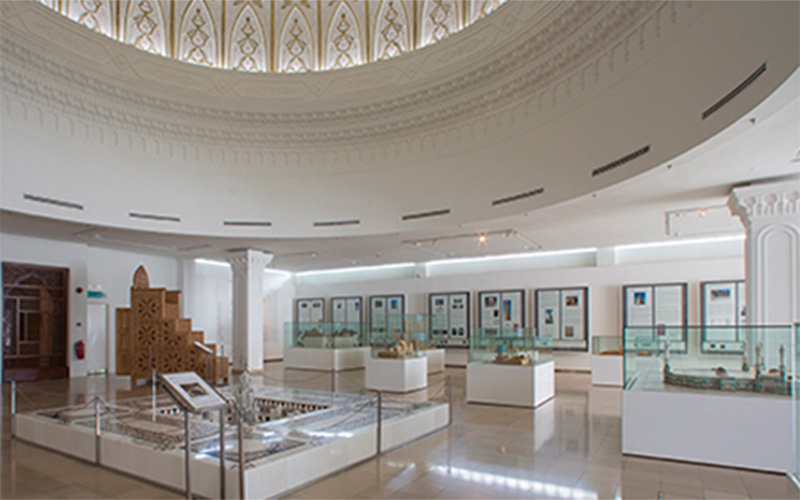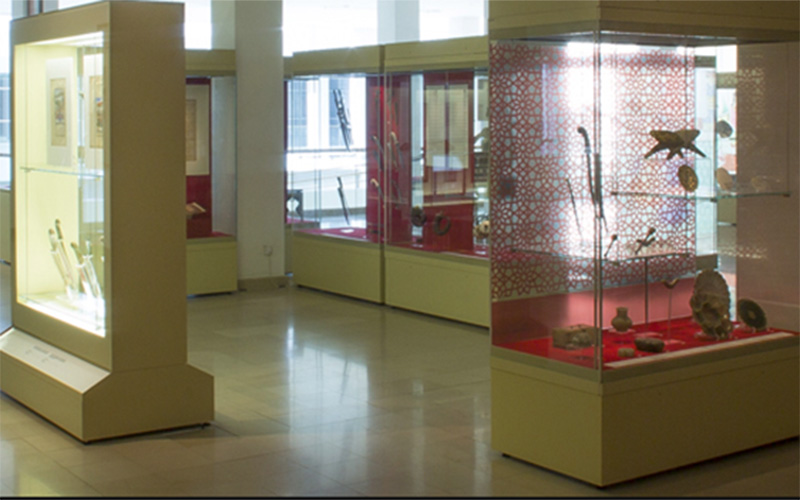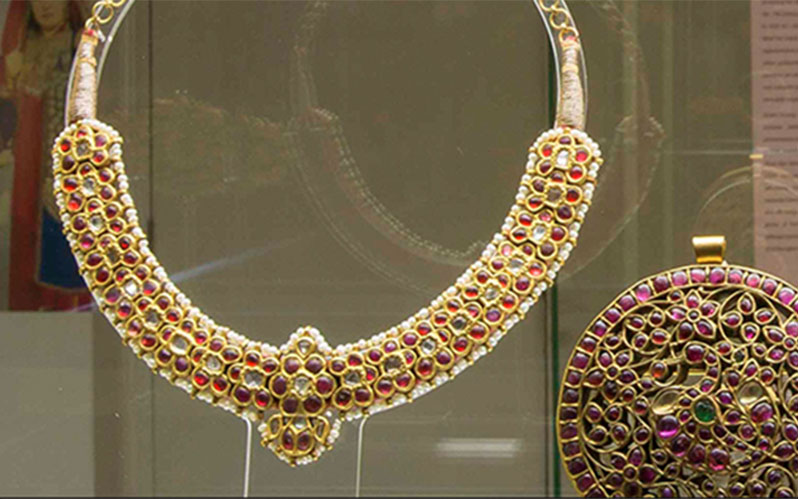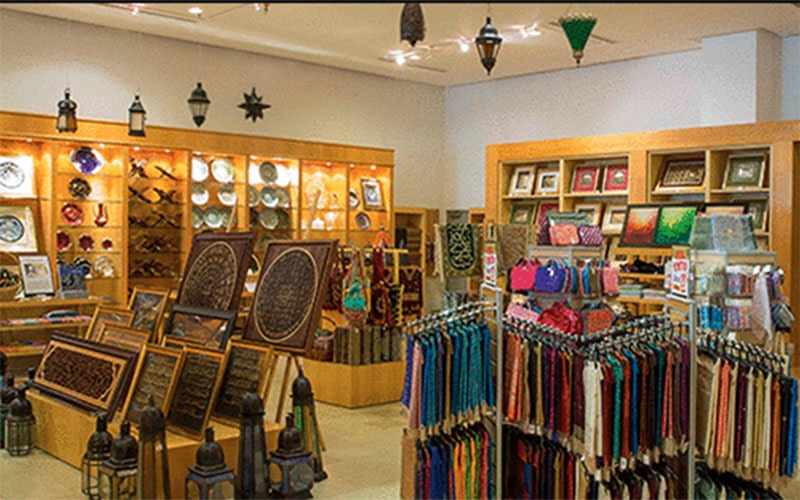Malaysia, a country in Southeast Asia, is a beautiful vacation destination, a land known for its rainforests, beaches, underwater activities, shopping, and multicultural city life. A Malaysia visa or a Malaysia tourist visa gives access to people from other countries to visit the tourist attractions this country has to offer, like the Petronas Twin Towers, Genting Highlands, Langkawi, Kota Kinabalu, Sipadan Island, Batu Caves, and many more.
Kuala Lumpur, the capital of Malaysia, is home to many museums often overlooked by tourists. Situated in the heart of Kuala Lumpur, the largest museum in Southeast Asia is the Islamic Arts Museum in Malaysia. It is a non-profit organization dedicated to being the preserver and educator of Islamic Art. Located amidst the lush greenery of Perdana Botanical Gardens, occupying 30000 square meters of land, the museum opened in December 1998, housing approximately 7000 artifacts and relics. This stunning feat of architecture, featuring a turquoise-colored gigantic dome, domed ceilings carved with Islamic patterns, and glass walls that let the natural light fall inside the museum, will surely leave you in awe.
The entrance to the museum is reminiscent of a Persian Iwan, with a verse from the Quran inscribed in the mosaic tiles. The main foyer has an impressive, beautifully decorated dome ceiling and a crisp white interior with marble floors. Other elements in the museum are the fountain garden, a view terrace, a children’s library, and a scholar’s library.
The Islamic Arts Museum Malaysia collection comprises print journals, books, reference items, and audio-visual materials. These collections are divided into three sections – Open Collections, Special Collections, and Reference Collections. The highlight of the museum is the magnificent door curtain of the Kaaba, Kiswa, referred to as the “House of God,” along with manuscripts that date back to the 17th century, which are changed annually, is an attraction to cherish during the tour of the museum.
This museum hosts many activities for children and adults alike. Participate in glass painting or artifact painting sessions. Join other art workshops or practice calligraphy skills in the Arabic Calligraphy class at affordable prices. The museum organizes lectures and talks on various topics in the spacious auditorium from time to time by world-renowned experts and distinguished speakers participating in the event.
 Featured
Featured
 Featured
Featured
Galleries at the Islamic Arts Museum

There are two floors of 12 permanent galleries and two special galleries for temporary exhibitions held periodically at the Islamic Arts Museum Malaysia. The objects on display in the museum are arranged in an open space theme in beautifully curated display cases.
Architecture
Fascinating exhibits of scale model mosques adorn the architecture gallery, like the UAE’s Sheikh Zayed mosque, the mud mosque of Timbaktu, and Masjid Al Haram (the Holy Mosque of Mecca), Turkey’s Selimiye Mosque, Jerusalem’s Dome of the Rock, and India’s Taj Mahal.
Quran and Manuscripts
Feast your eyes on an amazing display of Kufic calligraphy and a leaf from the Holy Quran dating back to the 9th or 10th century AD believed to be from North Africa or the Near East. Other manuscripts include the Safavid, Qajar Iran, and Ottoman Turkey from the 18th and 19th centuries.
India

The Indian Gallery provides a look inside the social and private lives of the Mughals. Their reign brought Islamic art, music, and architecture to the subcontinent. Intrinsic vases, ewers, and jewelry from the era are the main attractions of this gallery.
China
The Islamic faith spread its roots to China too. The exhibits include the Sini script showcasing the emphasis on both Chinese and Islam. Artifacts such as pottery and vessels uncommon to the Chinese can be found on display.
Malay World
The exhibits in this gallery showcase the Islamic influence on the Malay World, with examples of textiles with fruits, stylized plants, clouds on display, manuscripts, and clothes made with supplementary weft gold thread showing the influence of the Islamic faith in the lives of the people.
Jewelry

The Islamic lands produced some of the most magnificent jewelry and ornaments made of gold and gemstones. The opulent Mughal jewelry designs were crafted to make crowns, caskets, and amulet holders. Exhibits include Indian jewelry, Turkoman jewelry, and jewelry from the Fatimid era.
Textiles
This gallery showcases a variety of textiles like embroidered tapestries, prayer mats, rugs, carpets, wall coverings, and traditional costumes of the Muslims from the 15th to 19th century collected from all over the world. Exhibits include Kashmir shawls and Emperor Akbar’s velvet robe.
Arms & Armor
Swords, blades, daggers, barrels, axes, spears, shields, and maces in the arms and armor gallery show a very high artistic dimension of weaponry through ingenious workmanship with intricate design forms used in battles during the reign of the Muslim Empire.
Coins & Seals
Islamic coins had religious inscriptions. The museum has a vast collection of coins and seals from the 7th century to the 20th century, displaying the changes in size, appearance, and artwork. The Gold Dinar Ottoman and Gold dinar Umayyad are the most prized possessions of this gallery.
Metalwork
Islamic craftsmen were exceptionally skilled in metalwork, creating beautiful vessels with intricate inlays made of precious metals gold, silver, and copper and using alloys like bronze and brass. The exhibits include an Incense burner from Iran, a Brass pilgrim flask from India, and Veneto-Saraenic glided metal ewer from Italy.
Ceramics
The works of skilled artisans from the Islamic world can be seen in the relics on display in the Ceramics gallery. The exhibits include calligraphic bowls, lustreware from Kashan, Ottoman Iznik earthenware, and Mamluk glass rosewater sprinkler from Syria.
Living with Wood
The craftsmen of the Islamic world excelled in carving. The crafts of wood exhibited intricate carvings inlaid with precious materials like tortoiseshell, mother of pearl, and ivory. The Ottoman cabinet, a rosewood throne chair, and a pair of Qajar stained glass are the highlights of this gallery.
Islamic Arts Museum Shop

Located on the ground floor is the Museum Shop, a treasure trove of Southeast Asian woodwork for home decoration to Middle eastern jewelry. The shop offers a unique selection of souvenirs, books, postcards, paintings, trinkets, apparel, and other decorative items worth a buy.
Moza Restaurant
Located on the ground floor is the Moza restaurant with a Moroccan-inspired decor serving delicacies from Middle Eastern cuisine. Indulge in a cozy atmosphere and comfortable seating, with Arabic music playing in the background. Popular dishes to try here are the Hummus and Lamb roast. The Shorbat Adas with freshly grilled Adana Kebabs, Jordanian style Dejaj Mousakhan, and Mediterranean pizza or Omm Ali (a home-baked Egyptian-style bread pudding) are a must-try.
Museum Malaysia Opening Hours
- The Islamic Art Museum is open daily, including public holidays, from 10 am to 6 pm.
- The Museum Restaurant is open from Tuesdays to Sundays from 10 am to 6 pm.
Museum Malaysia Entrance Fee
- Adults: RM 14
- Students (with ID) : RM 7
- Children (6 and Below): Free
- Senior Citizen: RM 7
The prices of tickets when the special galleries are closed are RM 12 and RM 6 for adults and students, respectively.
Dress Code
Show respect to Islamic culture when visiting the Islamic Arts Museum Malaysia. Though there is no mention of a dress code at the entrance, remember to cover your head, knees, and shoulders.
Conclusion
If you are an art enthusiast, then you must visit the Islamic Arts Museum for a rich and rewarding experience. What sets the Islamic Arts Museum apart from the rest is the sheer quality of its exhibits. By paying a nominal fee, you get to see thousands of ancient treasures closely and immerse yourself in the history and diverse cultures of Islamic Civilizations. So, drop by the Islamic Arts Museum on your next visit to Malaysia.
